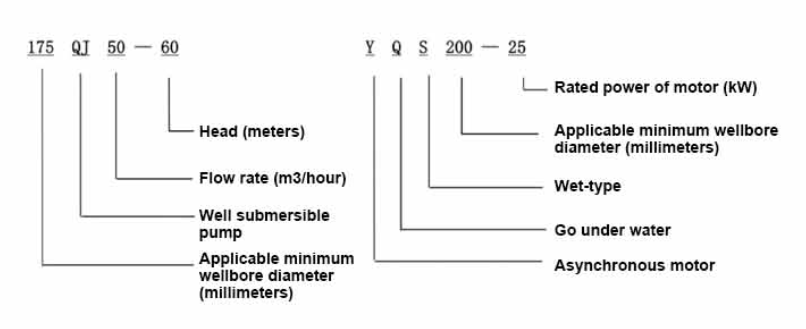Desemba . 22, 2024 05:14 Back to list
submersible pump repair
Submersible Pump Repair A Comprehensive Guide
Submersible pumps play a crucial role in various applications, from draining water in flooded areas to facilitating irrigation systems and providing municipal water supplies. However, like any mechanical device, these pumps can experience wear and tear, resulting in malfunctions that require effective repair solutions. This article outlines the common issues associated with submersible pumps, the repair process, and tips for maintenance to ensure longevity and efficiency.
Understanding Submersible Pumps
A submersible pump is designed to be submerged in fluid, typically in wells or tanks. It consists of a hermetically sealed motor that is coupled to a pump body. These pumps are efficient because they push fluid to the surface rather than drawing it up, making them ideal for deep-well applications. Despite their advantages, submersible pumps are susceptible to various problems due to their operational environment and mechanical complexities.
Common Issues and Signs of Failure
Identifying issues early on is essential to effective repair. Here are some common problems associated with submersible pumps
1. Overheating This often results from running the pump in dry conditions or prolonged use. Signs include unusual noises and a burning smell.
2. Clogs Debris can accumulate in the impeller, restricting flow and reducing efficiency. Symptoms include reduced water output and increased energy consumption.
3. Electrical Failures Damage to the motor or electrical connections from moisture infiltration can cause the pump to stop working entirely. Look for tripped breakers or burnt wires.
4. Seal Leaks Over time, seals can wear down, leading to contamination of the motor and fluid. Symptoms may include water pooling around the pump or reduced performance.
5. Cavitation This phenomenon occurs when the pressure in the pump drops below the vapor pressure of the fluid, leading to damage in the impeller. You might notice a decrease in flow and unusual noises.
The Repair Process
Repairing a submersible pump requires careful diagnosis and a systematic approach
. Here’s a step-by-step guide1. Safety First Before starting any repairs, ensure safety. Disconnect power to the pump and use appropriate protective gear.
submersible pump repair

2. Remove the Pump Carefully extract the pump from its location. This may involve removing protective casing and fittings.
3. Clean and Inspect Thoroughly clean all parts and inspect for damage. Look for obvious signs of wear, corrosion, or clogs.
4. Replace Damaged Parts Depending on the inspection results, you may need to replace seals, bearings, impellers, or electrical components. Ensure that you have exact replacements to maintain compatibility.
5. Test the Repair Once repairs are made, conduct tests to ensure the pump operates correctly. Check for leaks, listen for abnormal noises, and assess water flow.
6. Reinstall the Pump Return the pump to its original position and reconnect it to power, ensuring all connections are secure.
Maintenance Tips for Longevity
To prevent the need for extensive repairs, regular maintenance is key. Here are some tips
- Routine Inspections Check the pump regularly for unusual noises, leaks, or performance issues.
- Debris Management Eliminate any potential debris sources around the pump area to reduce clogging risks.
- Operate Within Specifications Avoid running the pump beyond its designed capacity or in dry conditions, which can lead to overheating.
- Electrical Check-ups Regularly inspect electrical components for wear, ensuring connections are tight and insulation is intact.
- Scheduled Servicing Consider scheduling professional maintenance periodically, particularly for high-usage pumps.
Conclusion
Submersible pump repair can often be a straightforward process if diagnosed and addressed promptly. Understanding the common issues, following a detailed repair process, and implementing regular maintenance can significantly enhance the longevity and efficiency of your submersible pump. By taking proactive steps, you can ensure that your pump continually operates at peak performance, thereby avoiding costly repairs and service interruptions.
-
submersible-sump-pump-auto-drainage-for-crawlspaces
NewsAug.22,2025
-
solar-powered-stainless-steel-submersible-well-pump-setup
NewsAug.22,2025
-
stainless-steel-well-pump-flow-rate-optimization
NewsAug.22,2025
-
water-filled-submersible-pump-fish-farm-oxygenation
NewsAug.22,2025
-
submersible-pump-in-aquaculture-and-fish-farming
NewsAug.22,2025
-
deep-well-submersible-pump-for-drought-areas
NewsAug.22,2025
-
 submersible-sump-pump-auto-drainage-for-crawlspacesCrawlspaces, those narrow areas beneath homes, are prone to water accumulation due to leaks, groundwDetail
submersible-sump-pump-auto-drainage-for-crawlspacesCrawlspaces, those narrow areas beneath homes, are prone to water accumulation due to leaks, groundwDetail -
 solar-powered-stainless-steel-submersible-well-pump-setupHarnessing solar energy to power stainless steel submersible well pumps is a sustainable and coDetail
solar-powered-stainless-steel-submersible-well-pump-setupHarnessing solar energy to power stainless steel submersible well pumps is a sustainable and coDetail -
 stainless-steel-well-pump-flow-rate-optimizationIn various applications like agriculture, domestic water supply, and industrial use, the flow rate oDetail
stainless-steel-well-pump-flow-rate-optimizationIn various applications like agriculture, domestic water supply, and industrial use, the flow rate oDetail
